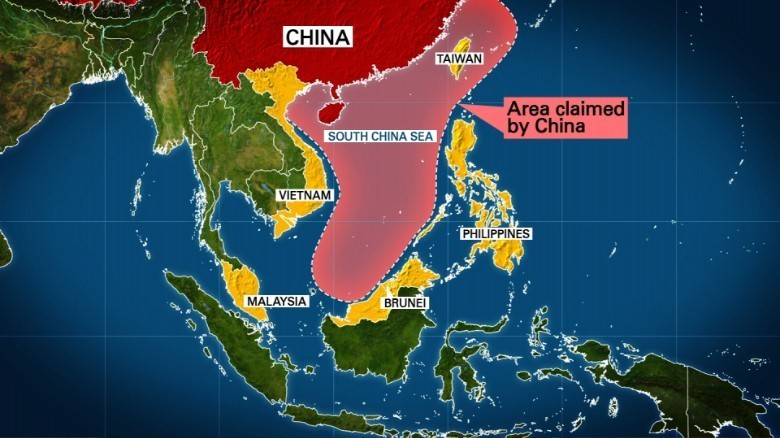South China Sea: A Hotbed for the Next Conflict?

Image Source: News India Official
A Philippine boat and a Chinese Coast Guard ship recently collided near a contested reef in the disputed South China Sea. This is the latest in a series of incidents between the Philippines and China over control of maritime territory in this region. Following the incident, the two countries have been busy trading accusations against each other.
The Philippines has asserted that its boat was on a supply mission to Second Thomas Shoal in the Spratly Islands when it was ‘directly attacked’ by the Chinese vessel. China, on the other hand, accused the Philippines’ vessels of ‘illegally intruding’ in its waters and ‘deliberately colliding’ with the Chinese ship. Just one day prior to this incident, the Philippines had accused China of using water cannons to obstruct three of its vessels and ‘severely damaging’ the engine of one of these boats.
Over the course of the past few decades, the South China Sea region has emerged as a hotbed of conflicts among the countries bordering it. In addition to China and the Philippines, Taiwan, Malaysia, Vietnam, and Brunei have also staked claims to the waters, islands, and adjoining Exclusive Economic Zone in the region. The significance of the South China Sea is attributed to its strategic location, the presence of rich fishing grounds, and the fact that trade worth more than $3 trillion dollars passes through it every day.
The largest country in the region, China, uses the imaginary 9-dash line map and claims nearly 90% of the South China Sea as its own. As a result, it is continuously engaged in disputes with other countries that have made overlapping claims to the territories in the area. This historical claim of China was challenged by the Philippines in an international tribunal, which, while delivering its verdict in 2016, overwhelmingly ruled in favor of the Philippines and rejected the Chinese position.
China has, however, refused to recognize this judgment and continues to ignore it. In fact, it is opined that China has become increasingly aggressive and assertive with the passage of time. In order to maintain and promote peace, stability, and prosperity in the South China Sea and its adjoining areas, it becomes imperative for all nations bordering these waters to resolve all territorial issues in a constructive and peaceful manner. However, with China taking on an expansionist view, the probability of a peaceful resolution in the near future remains negligible.
It must also be noted that the US, an ally of the Philippines, has vowed to defend the latter against any Chinese aggression. Therefore, should China attempt to assert its claim in a violent manner against the Philippines, there exists a chance of this regional issue taking the shape of a wider conflict between the world’s largest economies, the US, and China. It will also have ripple effects for other nations in the region, including India.
Team Profile

- News Writer
- Anushka Pundir is a driven student currently pursuing her Masters in Business Administration (F&A) at Amity University. Anushka embarked on her academic journey with a Bachelor's degree in Political Science (Hons) from Delhi University, a testament to her diverse interests. Following her undergraduate studies, she dedicated herself to the rigorous preparation for UPSC and other government exams, showcasing her commitment to public service.
Latest entries
 English31 December 2023Russia’s President Putin Acknowledges Advancements in Bilateral Cooperation with India in New Year Greetings
English31 December 2023Russia’s President Putin Acknowledges Advancements in Bilateral Cooperation with India in New Year Greetings English30 December 2023India and Russia Strengthen Ties During EAM Jaishankar’s Visit, Discuss Nuclear Cooperation and Northern Sea Routes
English30 December 2023India and Russia Strengthen Ties During EAM Jaishankar’s Visit, Discuss Nuclear Cooperation and Northern Sea Routes News29 December 2023Qatar Commutes Death Sentence for Eight Former Indian Navy Officers; India Awaits Detailed Judgment
News29 December 2023Qatar Commutes Death Sentence for Eight Former Indian Navy Officers; India Awaits Detailed Judgment English28 December 2023Congress to Rally for Change, Targets BJP’s ‘Arrogant’ Government
English28 December 2023Congress to Rally for Change, Targets BJP’s ‘Arrogant’ Government









